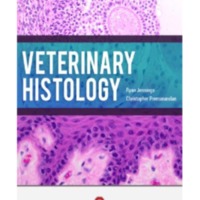Veterinary Histology
Dublin Core
Title
Subject
Description
The roles of veterinarians in society range from clinician to researcher, food inspector to enlisted military officer. Critical to the educational training of all of these veterinarians is the fundamental understanding of basic anatomy, both gross and microscopic. The knowledge of normal anatomy provides the basis of both physiology as well as pathology. Relating gross (e.g. physical exam findings) or microscopic changes (e.g. surgical biopsy) to specific disease processes first requires firm knowledge
of “normal”; hence, disease is detected as an alteration of normal! Teaching histology in the veterinary curriculum is the challenging process of conveying to the future
veterinarian the clinical relevance of microscopic anatomy, which may not be inherently appreciable
to the first-year veterinary student.
of “normal”; hence, disease is detected as an alteration of normal! Teaching histology in the veterinary curriculum is the challenging process of conveying to the future
veterinarian the clinical relevance of microscopic anatomy, which may not be inherently appreciable
to the first-year veterinary student.
Source
https://open.umn.edu
Publisher
Date
2017
Contributor
Baihaqi
Rights
Creative Commons
Format
PDF
Language
English
Type
Files
Collection
Citation
Ryan Jennings , Christopher Premanandan, “Veterinary Histology,” Open Educational Resources (OER) , accessed August 2, 2025, https://oer.uinsyahada.ac.id/items/show/2211.


